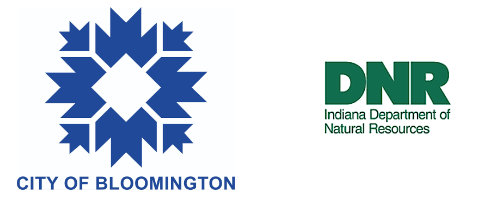Urban Forestry Storm Response Plan (2022-23)
The City of Bloomington, Indiana lies in an area prone to severe weather events such as tornadoes, thunderstorms, hurricanes, hail, high winds, ice, and snow. Severe weather can lead to catastrophic damage and produce significant volumes of debris.
Many cities develop emergency response and recovery plans that address serious public safety and health issues during and after severe weather events. These plans, however, commonly overlook tree issues and woody debris in mitigation efforts.
The Blooming Urban Forest Storm Response Plan was developed with the support of grant funding from the Indiana Department of Natural Resources Community and Urban Forestry. It examines Bloomington’s existing storm response practices and available urban forest data, along with national best practices, to identify opportunities for improvement in policies and procedures to increase the effectiveness of the City’s emergency storm response operations.
By meeting with stakeholders across the city and with city partners, the existing storm response program was analyzed and recommendations made to better manage future events, decrease the amount of damage, preserve the many tree benefits provided by its canopy cover, and improve public safety.
Many cities develop emergency response and recovery plans that address serious public safety and health issues during and after severe weather events. These plans, however, commonly overlook tree issues and woody debris in mitigation efforts.
The Blooming Urban Forest Storm Response Plan was developed with the support of grant funding from the Indiana Department of Natural Resources Community and Urban Forestry. It examines Bloomington’s existing storm response practices and available urban forest data, along with national best practices, to identify opportunities for improvement in policies and procedures to increase the effectiveness of the City’s emergency storm response operations.
By meeting with stakeholders across the city and with city partners, the existing storm response program was analyzed and recommendations made to better manage future events, decrease the amount of damage, preserve the many tree benefits provided by its canopy cover, and improve public safety.
|
Urban Canopy Works, LLC | Contact Us | © 2023-25
|
UCW is proud to support: |




